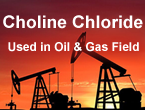 |
| |
Material Safety Data SheetProduct Name : Choline Chloride 50% Corn Cob Formula : C5H14ClNO Synonym : None A) Typical Composition
B) Physiological EffectsEye : Human experience indicates that the above products are not an eye irritant. C) Emergency and First Aid ProceduresEye Contact : Flush eyes with copious quantities of water for a minimum of fifteen minutes. Use fingers to D) Fire Protection InformationFlash Point : None E) Reactivity dataChemical Stability : Stable at normal temperatures and conditions of storage. F) Environmental ProtectionEnvironmental Impact: All waste residuals should be handled under the prevailing local and national guidelines/regulations for control of such chemical wastes. Precautions if material is released or spilled: If spill occurs, sweep or shovel material into waste container. An appropriate industrial vacuum cleaner equipped with high efficiency particulate filters for dust may also be used. Waste Disposal Methods: Dispose of any residues or wastes according to prescribed statutes, regulations, and guidelines e.g. secured chemical landfill disposal, approved chemical wastes incineration of approved discharges to municipal or on site wastes water treatment facilities. G) Special Precautions and NotesStorage: Keep containers closed and away from moisture. Contact with moisture could cause heat to be generated. DISCLAIMER: The information in this MSDS was obtained from current and reliable sources. However, the data is provided without any warranty, expressed or implied, regarding its correctness or accuracy. Since the conditions of handling, storage and disposal of this product are beyond our control; it is the responsibility of the user both to determine safe conditions for use of this product and to assume full responsibility for loss, injury and expense arising out of the product's improper use. No warranty, expressed or inferred, regarding the product described in this MSDS shall be created or inferred by any statement in this MSDS. Various government agencies may have specific regulations regarding the transportation, handling, storage, use or disposal of this product which may not be covered in this MSDS. The user is responsible for full compliance. |
